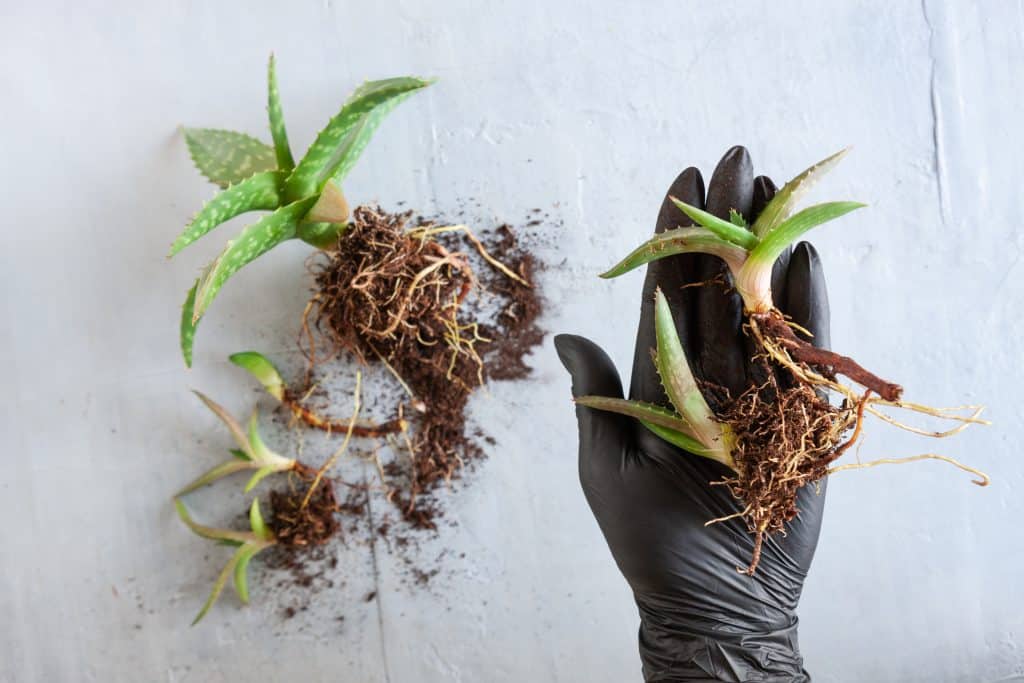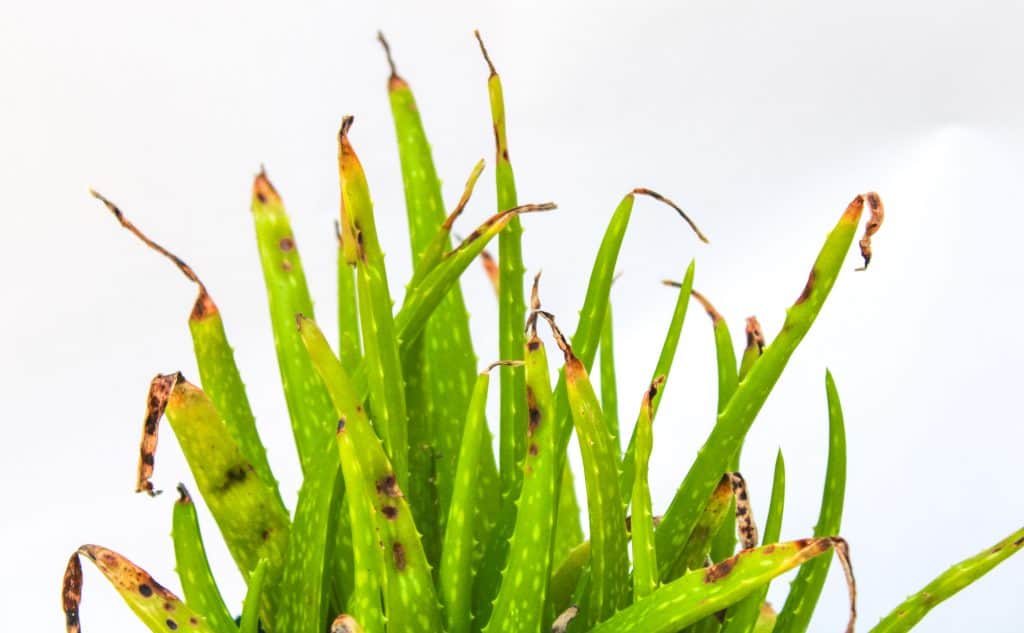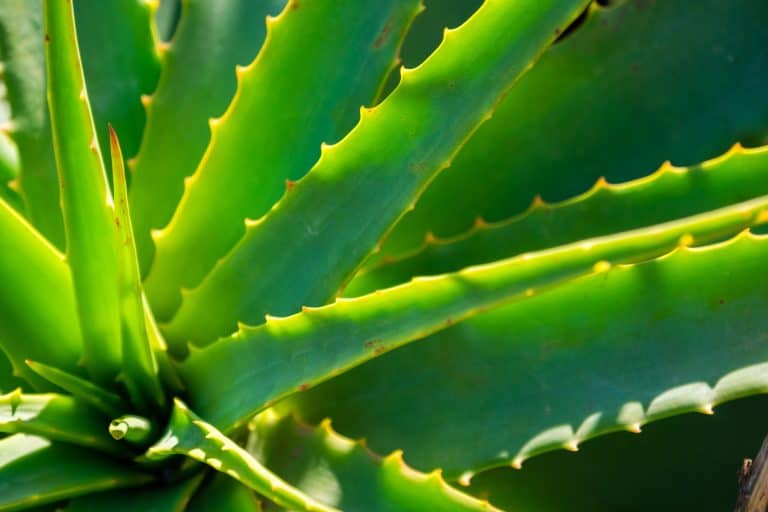Aloe vera plants have been a popular household staple for decades, and for good reason. Not only do they add a touch of greenery to any room, but they also have a host of health benefits. From soothing sunburns to improving skin conditions, the aloe vera plant is a true wonder of nature.
However, to truly reap the benefits of having an aloe vera plant, proper care is crucial. In this blog post, we’ll cover everything you need to know about aloe vera plant care. This includes:
- The best growing position
- The ideal light and temperature conditions
- The best watering and soil methods
- How to propagate new plants
We’ll also address common problems that may arise and offer solutions to keep your aloe vera plant healthy and thriving.
Growing position
Aloe plants can be grown both indoors and outdoors depending on the climate and personal preference.

Growing an aloe plant indoors can be a great way to bring a touch of nature into your home and enjoy its many benefits.
The root system of an aloe vera plant is relatively small and shallow, making it an ideal plant for container gardening. However, this also means that the plant can become root bound if left in the same pot for too long. To prevent this, it is important to periodically repot your aloe vera plant into a slightly larger container, making sure to gently loosen the roots before doing so. This will allow the plant to continue to grow and thrive.

Aloe vera is hardy and can tolerate a wide range of growing conditions, making it suitable for many different climates. When you plant aloe vera in a garden bed, it’s best to choose a well-draining soil and a location that receives full sun to partial shade. They can also be planted in rock gardens, xeriscape gardens or in a cactus and succulent garden. Aloe vera plants are also drought tolerant and require minimal maintenance. It is important to note that, while aloe vera plants can tolerate a wide range of conditions, they are not frost tolerant, so they must be brought indoors or protected during freezing temperatures.
Overall, aloe vera plants are versatile and can be grown successfully both indoors and outdoors with proper care and attention.
Light and Temperature
Aloe plants are native to arid regions, so they are accustomed to bright, indirect sunlight. Natural light from a south or west-facing window is an ideal location for an aloe vera plant. However, if the plant is placed in direct sunlight, it may cause the aloe leaves to turn yellow or brown. It’s best to keep the plant in a spot where it can receive bright, indirect sunlight for most of the day.

When it comes to temperature, aloe vera plants are quite hardy. They can tolerate a wide range of temperatures, but the ideal range is between 60-90°F. They can survive in temperatures as low as 40°F, but it’s best to keep them away from cold drafts or extreme heat.
If you notice your aloe vera plant is not thriving in its current light or temperature conditions, try adjusting them slightly. For example, move the plant to a different window or add a sheer curtain to filter the sunlight. It might take a little experimentation to find the perfect spot for your aloe vera plant, but it will be worth it in the end.
Watering and Soil
Aloe vera plants are drought-tolerant, so they don’t require frequent watering. In fact, it’s better to underwater than overwater, as too much water can cause root rot. The key is to allow the soil to dry out completely before watering again. This can vary depending on the size of the pot and the humidity level of your home, but as a general rule, you should wait until the top inch of soil is dry before watering. To check the moisture level of the soil, you can stick your finger into the soil.

When you do water, be sure to water the soil thoroughly, allowing the water to run through the drainage holes at the bottom of the pot. Avoid getting water on the leaves, as this can cause browning. It’s also best to use room-temperature water, as cold water can shock the roots and cause damage.
The type of soil that is best for aloe plants is well-draining soil. A cactus or succulent potting mix will work well, or you can make your own by mixing one part coarse sand or perlite with two parts regular potting soil. The important thing is that the soil should be able to hold just enough moisture to sustain the plant, but not so much that the roots sit in water.
Propagation
Propagating an aloe vera plant is a simple process that can be done at any time of the year. The best way to propagate aloe vera is by using offsets, also known as “pups.” These are small plantlets that grow around the base of the mother plant. To propagate using offsets, carefully remove the aloe vera pups from the mother plant using a sharp knife or scissors.
Once you have removed the offsets, allow them to callus over for a few days. This helps the wound heal and reduces the risk of rot. Once the offsets have callused over, you can plant them in a well-draining soil mixture, similar to the one described in the previous section.
Make sure to keep the soil moist but not wet and in bright, indirect light until the new plants have established roots. It might take a few weeks for roots to develop, but once they do, you can treat them like any other mature aloe vera plant.

Another way to propagate an Aloe vera plant is by taking leaf cuttings. Simply cut a leaf from the bottom of the plant, let it dry for a day or two, and then plant it in a well-draining soil mixture with the cut end buried. Keep it in a warm and sunny spot and wait for it to form roots.
Propagating aloe vera plants is a great way to expand your collection and share the benefits of this versatile plant with friends and family.
Common Problems and Solutions
Aloe vera plant care is not difficult, but even with proper attention, aloe vera plants can still develop problems. Some common issues include:
- Brown tips on leaves: This can be caused by a number of factors, such as over-fertilization, underwatering, or exposure to cold drafts. To fix this, reduce the amount of fertilizer you are using, make sure to water the plant only when the soil is dry, and keep the plant away from cold drafts.

- Yellow leaves: This can be caused by underwatering or overwatering. Make sure to only water your aloe vera plant when the top inch of soil is dry.
- Soft, mushy leaves: This can be caused by overwatering or poor drainage. Make sure your pot has a drainage hole, and allow the soil to dry out completely before watering again.
- Pests: Aloe vera plants are relatively resistant to pests, but can still fall victim to mealybugs, spider mites, and scale insects. These pests can be removed by wiping the leaves with a damp cloth or using insecticidal soap.

- Slow growth: This can be caused by lack of sunlight or poor soil conditions. Make sure your plant is getting enough light and that the soil is well-draining.
- Root rot: This is caused by overwatering and occurs more commonly in pot grown plants. To prevent root rot, use a well draining potting mix and ensure there are drainage holes in the pot. Let the soil dry completely between watering.
- Aloe rust: This is a fungal disease that creates orange or yellow spots on the leaves, stems and sometimes also on the aloe flowers, which can then turn into rust-coloured pustules. This disease usually occurs in areas with high humidity and moisture. It can be controlled with fungicides and avoiding overcrowding of the plants.
By paying attention to your aloe vera plant and addressing any issues promptly, you can keep it healthy and thriving for many years to come.
Conclusion
In conclusion, aloe vera is a versatile and low-maintenance plant that can be a great addition to any home. Aloe vera plant care is not difficult and by providing the right amount of light, temperature, and water, as well as a well-draining soil, you can keep your aloe vera plant healthy and thriving.
Propagating your aloe vera plant is also a great way to expand your collection and share the benefits of this versatile plant with friends and family. And if you encounter any problems, there are many solutions that can help you fix them.
Overall, an aloe vera plant is not only a beautiful addition to your home but also a beneficial one. Aloe vera gel from the plant’s fleshy leaves can be used for medicinal purposes to relieve pain, such as skin irritations and sunburn. Aloe plants are also known for their air-purifying properties.

By following these simple care tips, you can enjoy the many benefits of growing aloe vera for years to come.
Thank you for reading our blog post on aloe vera plant care, we hope you found it informative and helpful.
Happy gardening!
